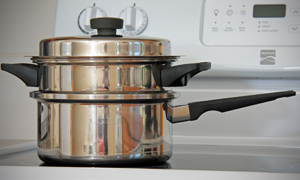Some foods and drinks are pasteurized. This means heat is used to kill harmful germs that can make you sick. Some of these germs (such as E. coli, Salmonella) are in milk naturally, while others may get into milk as it’s handled and processed. Raw milk, juice, and cider are often pasteurized.
In Canada, it’s against the law to sell raw (unpasteurized) milk because it’s not safe to drink. Milk and dairy products sold to the public must come from a licensed commercial facility, with approved food safety processes, including pasteurization, that makes the food safe to eat.
If you have raw milk at home from a cow, goat, or sheep, you can pasteurize the milk yourself to make it safe to drink for you and your family. Home-pasteurized milk and dairy products cannot be sold or distributed to the public.
What are the risks of drinking raw milk?
Germs from raw milk can cause problems like:
- vomiting (throwing up)
- diarrhea (watery stool which may be bloody)
- pain or cramping in the abdomen (belly)
- kidney failure
- miscarriage or death of an unborn baby
You're at higher risk of getting sick from raw milk if you:
- are younger than 5 years old
- are an older adult
- are pregnant
- have a weak immune system (such as from cancer, HIV)
- have health issues (such as diabetes, heart problems)
What do I need to pasteurize milk at home?
You’ll need:
- a double boiler (stainless steel or aluminum) or a small pot inside a bigger pot

- a clean, sterilized cooking thermometer (metal stem probe thermometer)
- clean containers (such as large canning jars, bottles)
- a big spoon or spatula
- an ice-water bath—fill a bowl or the sink with cold water and ice
How do I pasteurize milk at home?
To pasteurize milk at home, follow these steps:
First, clean and sterilize.
- Wash your hands and work area.
- Boil all containers and lids in water for at least 2 minutes to sterilize them.
Second, heat the milk.
- Pour water into the bottom part of the double boiler until it’s half full.
- Fill the top part of the double boiler with less than 16 cups (1 gallon) of milk.
- Turn up the burner a little at a time to heat the milk up slowly.
- Use the cooking thermometer to watch the temperature of the milk. Don’t let the thermometer rest on the bottom or sides of the boiler. Stir the milk often as it’s heating up.
Third, keep the milk at the right temperature.
- Heat the milk to 63°C (150°F) for at least 30 minutes
or 72°C (162°F) for at least 15 seconds.
- If the temperature falls lower than your target temperature, start timing again.
Last, cool the milk.
- Put the top part of the double boiler in the ice water bath (don’t get water in the milk) to cool it fast.
- Stir the milk often to cool it faster, until it reaches 20°C (68°F) or cooler.
How do I store the milk?
Pour the cooled milk into sterilized containers right away. Put the containers in the fridge to cool the milk to 4°C (40°F) or colder.
How long can I store milk?
You can store pasteurized milk in the fridge for 2 weeks. It’s a good idea to label the milk with the date it was pasteurized.
Can I pasteurize milk in the microwave?
The microwave cannot be used to pasteurize milk, because you can’t control the temperature.
Can I use this method to pasteurize other foods?
This method does not work to pasteurize other foods. Other foods may need to be heated to different temperatures to be pasteurized.
Contact Alberta Health Services
Environmental Public Health to ask about how to pasteurize other types of food.
All images on this page provided by Environmental Public Health, Alberta Health Services.
